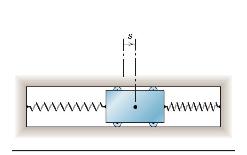A particle moves along the (x)-axis with an initial velocity (v_{x}=50 mathrm{ft} / mathrm{sec}) at the origin
Question:
A particle moves along the \(x\)-axis with an initial velocity \(v_{x}=50 \mathrm{ft} / \mathrm{sec}\) at the origin when \(t=0\). For the first 4 seconds it has no acceleration, and thereafter it is acted on by a retarding force which gives it a constant acceleration \(a_{x}=-10 \mathrm{ft} / \mathrm{sec}^{2}\). Calculate the velocity and the \(x\)-coordinate of the particle for the conditions of \(t=8 \mathrm{sec}\) and \(t=12 \mathrm{sec}\) and find the maximum positive \(x\)-coordinate reached by the particle.

Fantastic news! We've Found the answer you've been seeking!
Step by Step Answer:
Related Book For 

Question Posted:





